Kitchens are the heart of the home—where creativity and functionality come together. But why settle for a cookie-cutter design when you can elevate your space with a bold and unique look? The secret to achieving this? Mixing textures! When you combine materials like marble, wood, and metal, you create a layered, sophisticated atmosphere that’s both inviting and stylish.
Whether you’re looking to give your kitchen a complete makeover or just want to add a few stylish touches, this guide will take you through the art of mixing textures to create a kitchen that’s as beautiful as it is functional.
This post contains carefully selected links to products we love. If you choose to purchase through them, we may earn a small commission at no extra cost to you.
1. The Power of Marble: Elegance Meets Durability
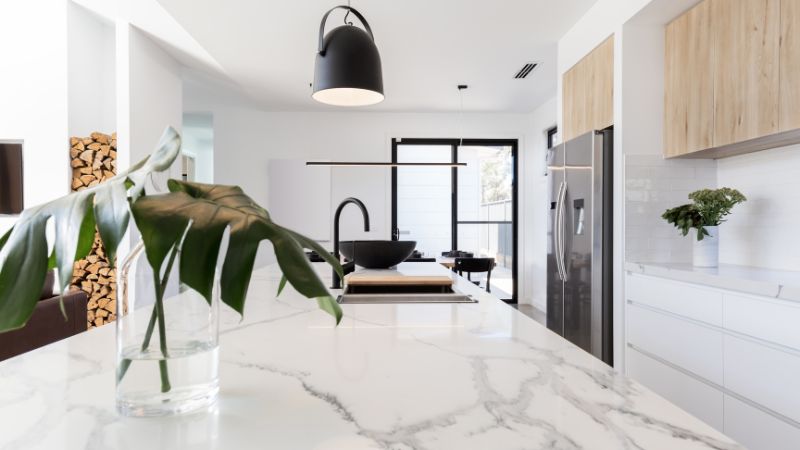
When it comes to luxurious kitchen design, marble is the ultimate showstopper. Its timeless elegance adds sophistication and drama, creating a statement piece in any kitchen.
Why Marble?
Marble has a natural veining pattern that adds depth and richness to the space. It’s durable, heat-resistant, and, best of all, it makes your kitchen feel elevated and fresh.
How to Incorporate Marble:
- Countertops: Marble countertops are an investment that will pay off in terms of aesthetics and function. The crisp, smooth finish is perfect for meal prepping and adds a touch of opulence.
- Backsplashes: Create a striking backsplash using marble tiles that match your countertop. The contrast between smooth marble surfaces and textured materials like wood or metal will create visual interest.
👉 Check out this stunning marble countertop for a luxurious upgrade!
2. Wood: Warmth and Texture That Complements Every Space
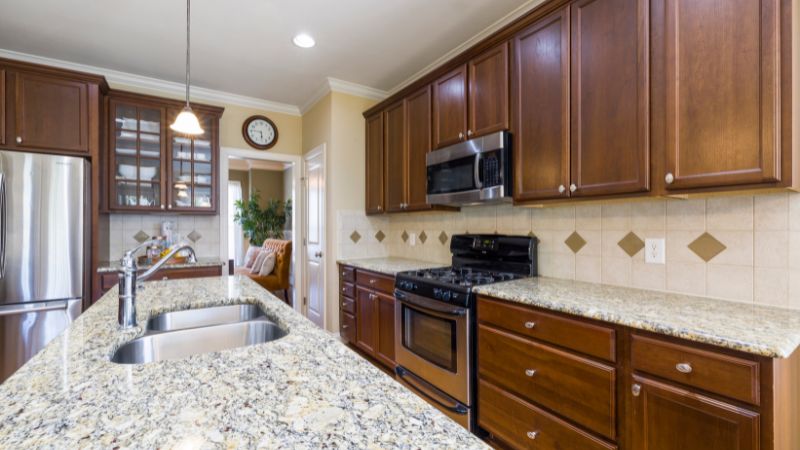
Wood brings a sense of warmth and natural beauty into the kitchen. Whether you opt for a light oak or a deep walnut, wood adds a cozy, organic touch that contrasts beautifully with the cool tones of marble or metal.
Why Wood?
Wood has a versatile appeal, blending seamlessly with modern or traditional designs. It’s perfect for cabinets, flooring, and accents, offering a balance between elegance and rustic charm.
How to Incorporate Wood:
- Cabinets and Shelving: Choose natural wood cabinets with clean lines for a modern feel, or go for rustic, weathered wood for a more vintage vibe.
- Accent Pieces: Incorporate wood through small accessories like cutting boards, utensil holders, or stools. These accents will help break up the sleekness of marble or metal and bring the design together.
👉 This beautiful wood kitchen shelving system adds the perfect rustic touch!
3. Metal: Bold, Industrial, and Sleek
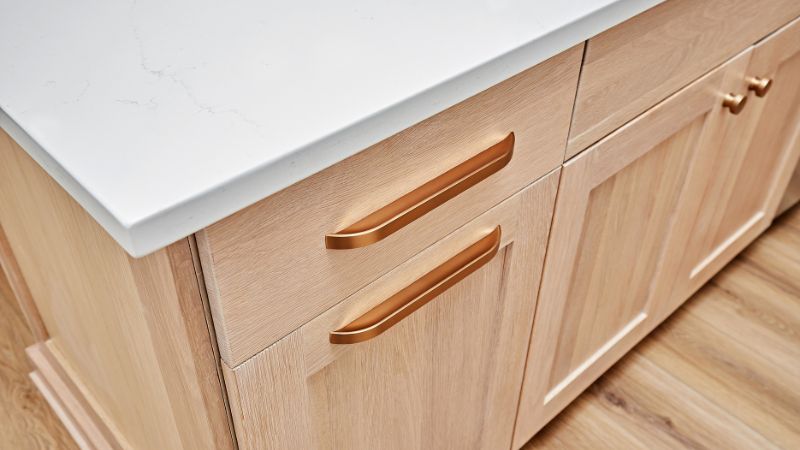
Metal is a perfect way to add contrast and sophistication to your kitchen design. From stainless steel appliances to gold accents, metal brings an industrial edge that pairs perfectly with soft materials like wood and marble.
Why Metal?
Metal adds a touch of modernity and edge to a space, making it feel high-end and contemporary. The reflective surfaces of metal can also help brighten up your kitchen by bouncing light around.
How to Incorporate Metal:
- Appliances: Opt for sleek stainless steel appliances that complement the luxurious feel of marble countertops.
- Accents and Hardware: Gold or brass handles, light fixtures, and faucets will add elegance and shine. Pair them with matte marble or wood finishes to create balance and visual harmony.
👉 Check out these sleek gold cabinet handles that will add elegance to your kitchen!
4. Combining Marble, Wood, and Metal: Finding the Perfect Balance

Now that we’ve covered the individual materials, it’s time to talk about combining them to create a cohesive, stylish kitchen. The key to a successful layered look is balance.
Balancing the Materials
When you mix textures, it’s important to avoid overwhelming the space. Aim for a balance between the warmth of wood, the sleekness of metal, and the richness of marble. Here’s how to do it:
- Marble as the Anchor: Let marble be the foundation of your kitchen design—countertops, backsplashes, and even floors. Its natural beauty will help tie all the elements together.
- Wood for Warmth: Use wood for cabinets, shelving, and accents to add warmth and contrast. It will break up the coldness of marble and metal, creating a welcoming atmosphere.
- Metal for Accents: Use metal for smaller accessories like light fixtures, faucets, and cabinet hardware. It should complement, not overpower, the marble and wood.
5. Color Harmony: Matching Tones for a Polished Look
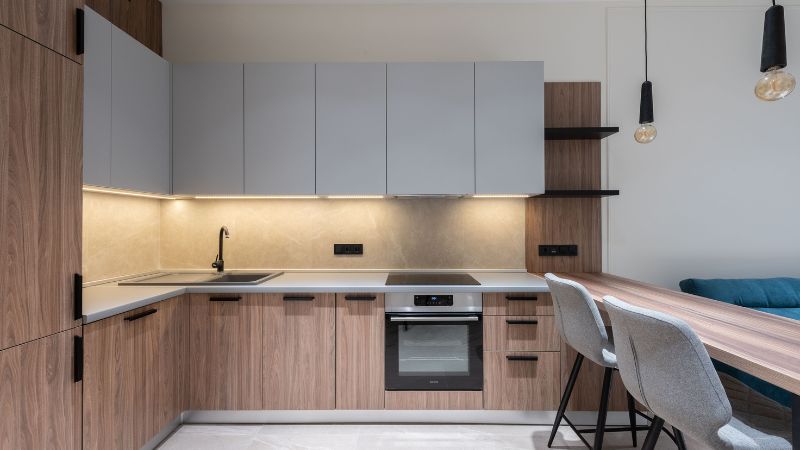
Color plays a crucial role in how textures interact with each other. When mixing materials like marble, wood, and metal, it’s essential to ensure the colors complement one another.
Choosing Colors That Work Together
- Light vs. Dark: If you’re using dark wood, opt for a lighter marble or metal finish to keep the space feeling open and airy. Conversely, light wood pairs beautifully with darker marble for a more grounded look.
- Warm vs. Cool: Wood is warm-toned, while metal can be either warm (brass, gold) or cool (stainless steel, chrome). Pair warm metals with warm woods and cool metals with cool-toned marble to maintain harmony.
- Neutral Bases: Consider using neutral tones for the base of your kitchen—white marble, grey wood, and matte black metal—to create a sleek, minimalist look that’s both stylish and timeless.
6. Texture Variety: The Key to Depth and Interest
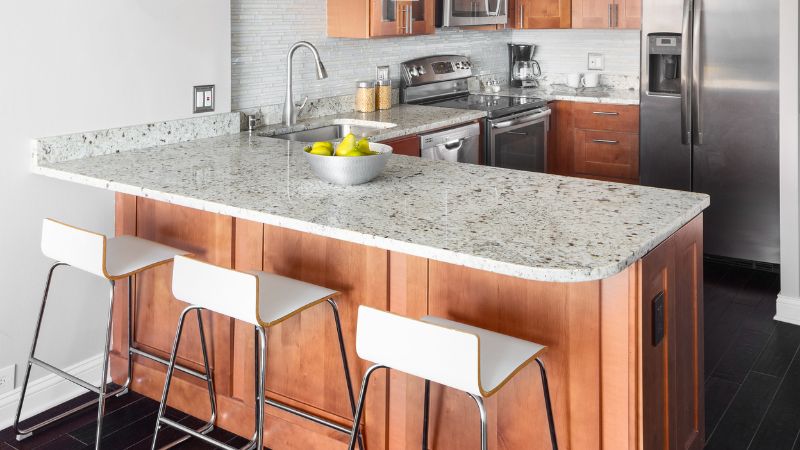
Mixing different textures creates depth, making your kitchen feel more dynamic and layered. The goal is to create a space that feels rich, not chaotic.
Types of Textures to Experiment With
- Polished vs. Matte: Mix the shiny finish of polished marble with the matte finish of wood or metal for added contrast. This creates a tactile experience that’s pleasing to the eye and the hand.
- Smooth vs. Rough: The smoothness of marble complements the rough texture of wood, while the industrial feel of metal brings its own gritty edge. Play around with these textures to create visual and tactile contrast.
- Natural vs. Synthetic: The organic beauty of wood can be balanced by the more refined, synthetic appeal of marble and metal, giving your kitchen an eclectic, yet cohesive feel.
7. Lighting: Highlighting Your Textural Choices
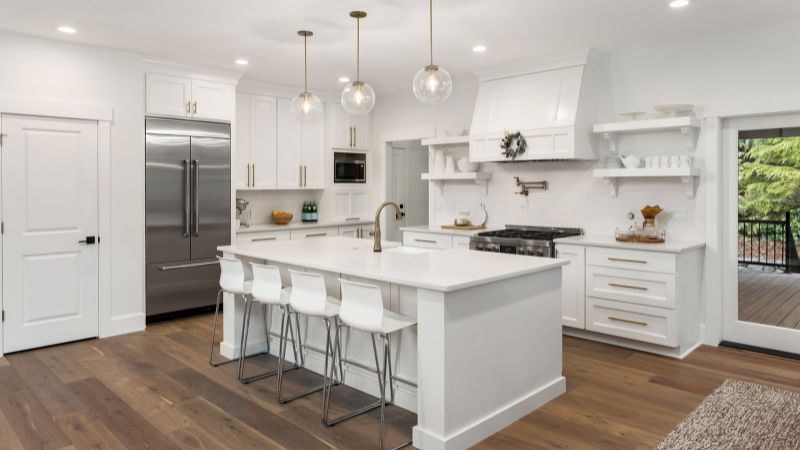
Great lighting can make or break the overall look of your kitchen. The right lighting will help showcase your carefully chosen textures, adding warmth, contrast, and depth.
Best Lighting for Mixing Textures
- Under-Cabinet Lighting: Install LED strips under cabinets to illuminate your marble countertops and showcase their natural veining.
- Pendant Lights: Hang pendant lights above your island or dining area to add style and shine. Consider gold or brass fixtures to complement both wood and marble.
- Task Lighting: Install task lighting above workstations to make your kitchen both functional and stylish.
👉 These gorgeous pendant lights will highlight your textural mix and elevate the whole space!
8. Bring It All Together: The Finishing Touches
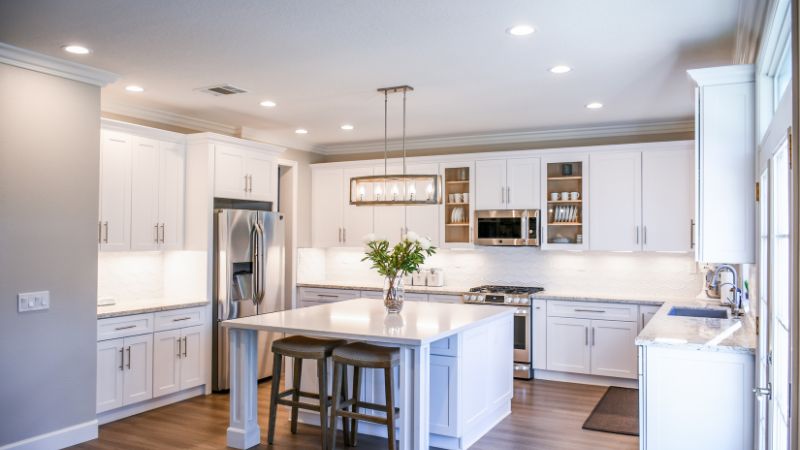
Now that you’ve selected your materials, it’s time to add the final details to make your kitchen uniquely yours. Add personal touches with accessories, like decorative bowls, plants, or even a stylish rug.
Personalizing the Space
- Add Greenery: Incorporate some plants to soften the hardness of the metal and marble. A few succulents or hanging plants can add life and color to the space.
- Decorative Accessories: Use simple decor pieces like wooden bowls, brass trays, or marble serving dishes to reflect your personal style.
Wrapping It Up
Mixing textures in the kitchen is all about balance and creativity. By combining materials like marble, wood, and metal, you can create a space that’s stylish, sophisticated, and uniquely yours. With a little planning and some thoughtful design choices, you’ll have a kitchen that’s as beautiful as it is functional.
Don’t forget to explore more kitchen design ideas and follow us on Pinterest for daily inspiration! And remember—great design starts with mixing textures!